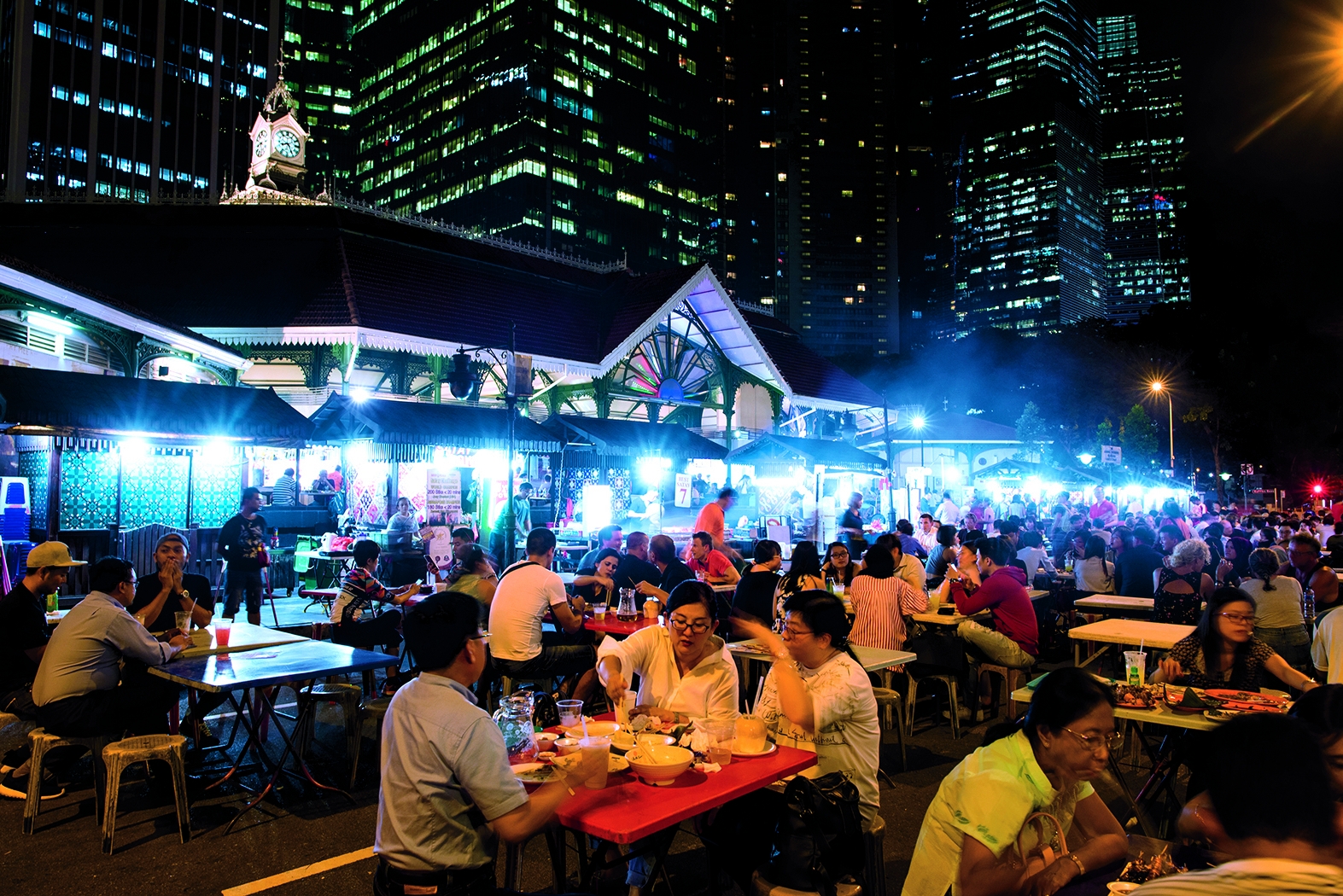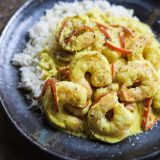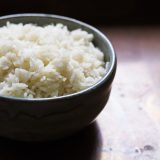It's surprisingly easy to feel overwhelmed in Singapore, a diminutive city-state crouched at the edge of the equator. It happens at the dinner table. It happens walking the streets.
And it starts with the climate—a one-two punch of 90°F heat and 90 percent humidity from dawn to dusk and beyond, oppressing you like a musty, wet blanket. It's also the architecture, 277 square miles of modernist glass and concrete stretched to the sky, leaving so little space for greenery on the ground, the city's few trees grow mostly on rooftops.
And then there is the food, a hefty contrast to the cuisines of neighboring Asian nations. There is carrot cake, which neither is a cake nor involves carrots, but rather is a dense and heavily sauced omelet-like dish reminiscent of egg foo young.
There is mee siam, a tangle of noodles dressed in a gravy of tamarind, dried shrimp and fermented beans, all topped with a hard-cooked egg. And its heartier relative, mee rebus, with a gravy made more robust for being thickened with potatoes.
Which means eating your way across Singapore leaves you craving lighter and brighter. But I didn't expect to find it at Candlenut, which bills itself as the world's first Michelin starred Peranakan restaurant. More on that in a moment.
The hike to Candlenut—for I was stupid enough to walk the several miles uphill into Singapore's Tanglin neighborhood, home to botanical gardens, embassies and shops of antiques well beyond my budget—was oppressive, steam lifting from the pavement in waves, sun blasting without respite.
Candlenut was a cool oasis. Soaring ceilings held by barn-like beams and stone pillars. Blue marble tables with rose and aqua tiles on the floor. Straw lanterns glowed, shedding variegated light. The glass of gewürztraminer was welcome relief.

Relief I didn't expect from the food. Peranakan cuisine is old-school Singapore, a result of Chinese immigrants intermarrying with Malaysians and tossing in some Indonesian seasonings and techniques along the way.
The result is food that is rich and potent—otak otak, fish cooked in coconut milk with chili paste and galangal (a relative of ginger), all wrapped in a banana leaf; and itek tim, a duck soup seasoned with salted vegetables and preserved sour plums.
My lunch stayed that course—fried fish skin with a thick, black soy sauce; well-charred chicken satay with a bold, gritty peanut sauce; and bowl of porridgy wagyu beef rendang—Singapore's answer to chili, chunky and meaty with a coconut milk sauce so thick and rich it deserved to be a meal on its own.
It was a robust affair. That is, until the crab curry—a bowl of lemony bright color and aroma, studded with thick, tender chunks of crab. It was rich, as you'd expect with a curry, yet had no heft. It cushioned the crab rather than coat or hide it.
More importantly, it was unlike any curry I'd ever had. I'm used to the heavily spiced curries of India, rich with toasted spices. Or the fiery chili and fresh herb-based curries of Thailand. This was different. The coconut milk was a common thread, but it was so much lighter and more vibrant, more ethereal. I needed to know to more.
This, of course, triggered a lengthy go-between exchange with the kitchen via my waitress. The recipe turned out to be rather simple. Copious lemon grass and fresh turmeric are pureed with the coconut milk, explaining both the color and aroma. Red chilies added piquancy. A bit of sugar, makrut lime leaves and galangal—which lends gingery-citrusy notes—brightened and balanced the richness of the coconut milk.
Indian curries rely on dried spices brought to life by blooming them in hot oil. Thai curries play off the robustness of fresh herbs and chilies. But none of that was at play here. This was a case of a few simple, bright ingredients blended and simmered, each flavor remaining distinct, yet melding with others.
And it all seemed doable. Except there was one outlier—the restaurant's namesake candlenuts. Popular in Indonesian and Malaysian cooking—not to mention Hawaiian—candlenuts have a creamy, rich nuttiness. Pureed with the other ingredients, they gave the curry a creaminess without weighing it down.
Bringing this dish back to Milk Street required some substitutions. Galangal is unusual in the U.S., so we reached for its more common cousin—ginger. Similarly, kaffir lime leaves are rare, but a combination of lime zest and juice—while not authentic—gave us the brightness we were after. Fresh turmeric also was a challenge. We worried that substituting widely available dried ground turmeric would impart dusty, stale flavors. But we were happy to notice little difference.
The bigger issue was the candlenuts. We tried various nuts—including cashews and peanuts—but found their flavors overpowered the other ingredients. But the answer was staring right at us. Macadamia nuts—which candlenuts reminded us of—turned out to have the perfect flavor and texture when pureed with the other ingredients.
The crab meat I'd had in Singapore was great, but we knew that substituting shrimp would keep the dish more affordable and up its appeal for many people. We didn't realize the switch also would give us a chance to add another layer of flavor.
After the sauce is pureed, it is briefly simmered to mellow the raw flavor of the lemon grass. So rather than simply throw away the shrimp tails, we added them to the sauce, simmering them for a bit, then straining them out. This added a subtle richness to the sauce and helped tie all the flavors together.
The result—particularly when paired with an easy coconut rice—was a lighter, brighter yet still boldly flavored curry that helped cut through the heft of Singapore's weather. No grueling uphill hike needed.





